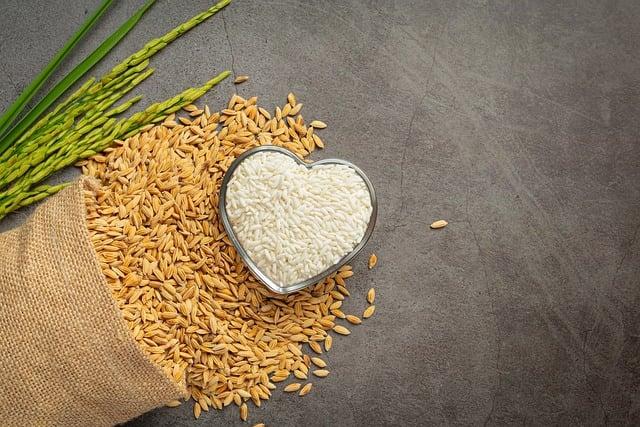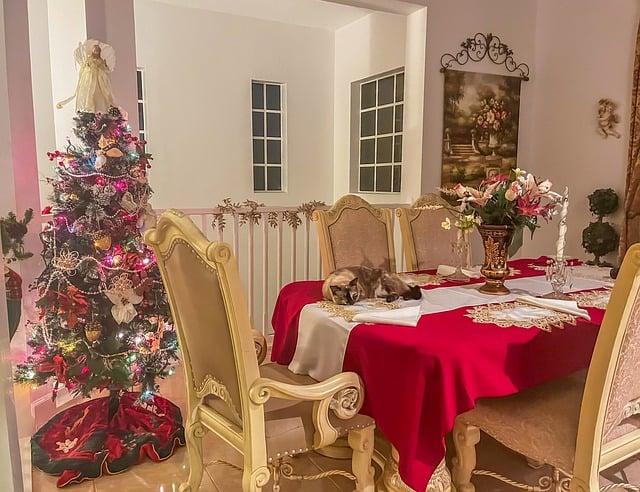In a quaint village, as winter whispered its arrival, the townsfolk gathered to hang their Christmas wreaths. Each circle of greenery told a story: the pine needles symbolized resilience, while the vibrant berries represented joy. Old Mrs. Thompson, with her twinkling eyes, shared that wreaths were once believed to ward off evil spirits, inviting only warmth and cheer. As the sun set, the wreaths glowed softly, uniting the village in a tapestry of tradition, hope, and the promise of togetherness during the festive season.
Table of Contents
- The Historical Significance of Christmas Wreaths
- Symbolism and Meaning Behind the Circular Design
- Creative Ideas for Decorating Your Christmas Wreath
- Caring for Your Wreath: Tips for Longevity and Freshness
- Q&A

The Historical Significance of Christmas Wreaths
Christmas wreaths have a rich history that dates back to ancient times, symbolizing various meanings across different cultures. Originally, the circular shape of the wreath represented eternity, with no beginning or end, making it a powerful emblem of everlasting life. In ancient Rome, wreaths made of laurel were awarded to victors in athletic competitions, while in early Christianity, they began to take on a more spiritual significance. The use of evergreens, such as pine and fir, in wreath-making was particularly important, as these plants remained vibrant throughout the winter months, symbolizing hope and renewal during the darkest days of the year.
As the tradition evolved, Christmas wreaths became a staple of holiday decor, embodying the spirit of the season. They are often adorned with **red ribbons**, **ornaments**, and **lights**, each element carrying its own significance. The **red ribbons** symbolize the blood of Christ, while the **evergreens** remind us of the promise of eternal life. In many cultures, hanging a wreath on the door signifies hospitality and welcome, inviting friends and family to share in the joy of the season. Today, wreaths are not only a decorative element but also a cherished tradition that connects us to our past, reminding us of the values of love, hope, and community during the festive season.

Symbolism and Meaning Behind the Circular Design
The circular design of a Christmas wreath carries profound symbolism, representing the eternal cycle of life and the unending love that surrounds us during the festive season. The absence of a beginning or end in the circle signifies **unity**, **wholeness**, and the **continuity of life**, reminding us that the spirit of Christmas transcends time. Traditionally, wreaths are made from evergreen branches, which symbolize **renewal** and **hope**, as these resilient plants remain vibrant even in the coldest months. This connection to nature serves as a poignant reminder of the warmth and joy that can be found even in the darkest of times.
Moreover, the circular shape of the wreath invites a sense of **inclusivity** and **community**. It encourages gatherings of family and friends, fostering connections that are central to the holiday spirit. The adornments that often embellish these wreaths—such as **ribbons**, **berries**, and **ornaments**—add layers of meaning, each representing different aspects of celebration and joy. The act of hanging a wreath on a door not only welcomes guests but also symbolizes an open heart and a spirit of generosity, inviting all to partake in the warmth and love that the season embodies.

Creative Ideas for Decorating Your Christmas Wreath
Transforming your Christmas wreath into a unique masterpiece can be a delightful way to express your holiday spirit. Start by incorporating **natural elements** such as pinecones, berries, or dried citrus slices. These organic additions not only enhance the wreath’s texture but also bring a touch of nature indoors. Consider using a mix of **different greens** like eucalyptus, fir, or holly to create depth and visual interest. You can also add a splash of color with **vibrant ribbons** or ornaments that reflect your personal style, whether it’s rustic, elegant, or whimsical.
For a more personalized touch, think about **themed decorations** that resonate with your family traditions. You might choose to include **handmade ornaments** or family photos in small frames, creating a wreath that tells your unique story. Another creative idea is to use **seasonal scents** by adding cinnamon sticks or dried lavender, which can evoke warm memories and enhance the festive atmosphere. don’t shy away from experimenting with **lighting**; small fairy lights woven through the wreath can add a magical glow, making your decoration stand out both day and night.

Caring for Your Wreath: Tips for Longevity and Freshness
To ensure your wreath remains a vibrant centerpiece throughout the holiday season, consider these essential care tips. **Keep it hydrated**: If your wreath is made of fresh greens, mist it lightly with water every few days to maintain moisture. This simple step can significantly extend its freshness. **Avoid direct heat sources**: Position your wreath away from fireplaces, radiators, or direct sunlight, as excessive heat can cause the foliage to dry out and lose its luster.
Additionally, **check for signs of wear**: Regularly inspect your wreath for any browning or wilting leaves. If you notice any, gently remove them to keep the overall appearance fresh. **Store it properly**: After the holiday season, if you wish to preserve your wreath for next year, consider storing it in a cool, dry place. Wrapping it in breathable material can help protect it from dust and damage. By following these tips, you can enjoy the beauty of your wreath well beyond the festive season.
Q&A
-
What is the historical significance of Christmas wreaths?
Christmas wreaths have roots in ancient traditions, symbolizing eternal life due to their circular shape. Originally made from evergreen branches, they were used by ancient cultures to celebrate the winter solstice and later adopted by Christians as a representation of the everlasting love of Christ.
-
What do the decorations on a Christmas wreath represent?
The decorations on a Christmas wreath, such as ribbons, ornaments, and berries, often carry specific meanings. For example, red ribbons symbolize love and joy, while pinecones can represent fertility and new beginnings. Together, these elements create a festive and meaningful display.
-
Why do people hang wreaths on their doors?
Hanging wreaths on doors is a way to welcome guests and spread holiday cheer. It serves as a visual invitation to celebrate the season, showcasing the homeowner’s festive spirit and creating a warm, inviting atmosphere.
-
Are there any specific customs associated with Christmas wreaths?
Yes, many families have their own customs related to Christmas wreaths. Some may light candles in an Advent wreath to count down the weeks to Christmas, while others might create a family tradition of making wreaths together, fostering a sense of community and togetherness during the holiday season.
As the holiday season approaches, the humble Christmas wreath transcends mere decoration. It symbolizes warmth, unity, and the spirit of giving. So, as you hang your wreath this year, remember: it’s more than just a circle of greenery; it’s a heartfelt welcome home.

大家好,我是彼得潘,專業的手法身體治療師。我喜歡探索和研究各種主題,並透過與人工智慧的合作分享專業、實用、有趣的文章。我們定期進行人工審核,以確保內容的準確性。如果您發現文章中有任何不準確的地方,請隨時與我們聯繫,我們會及時糾正。您可以透過 [email protected] 與我們聯繫。



